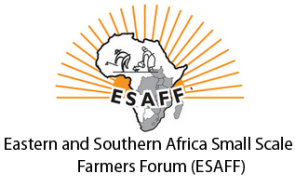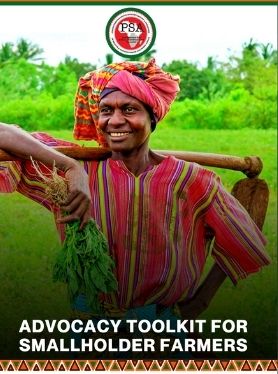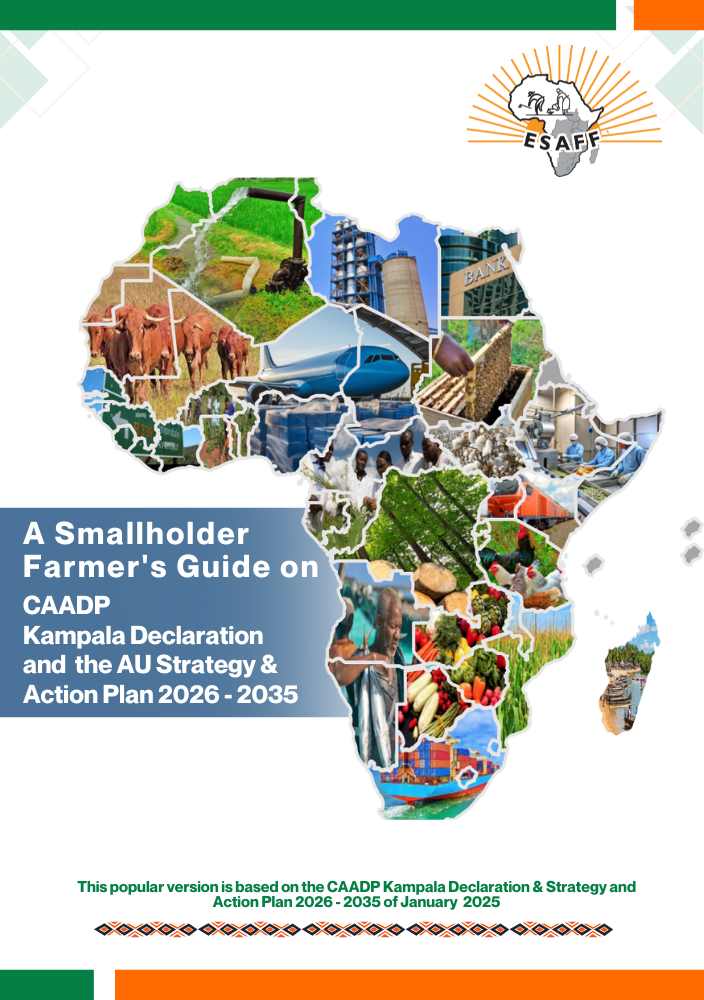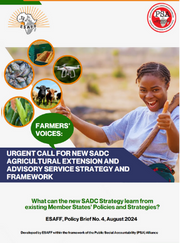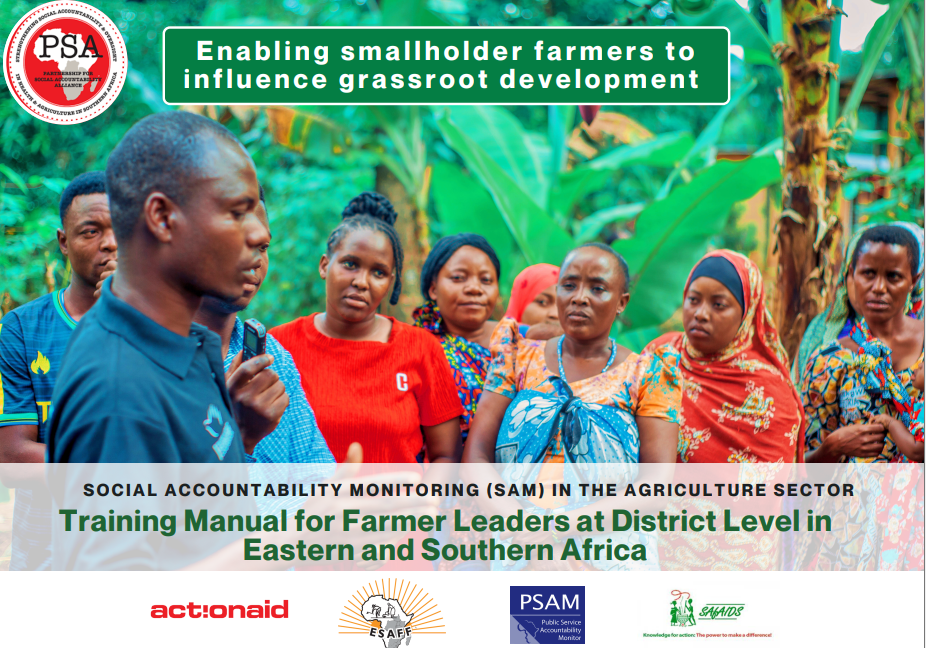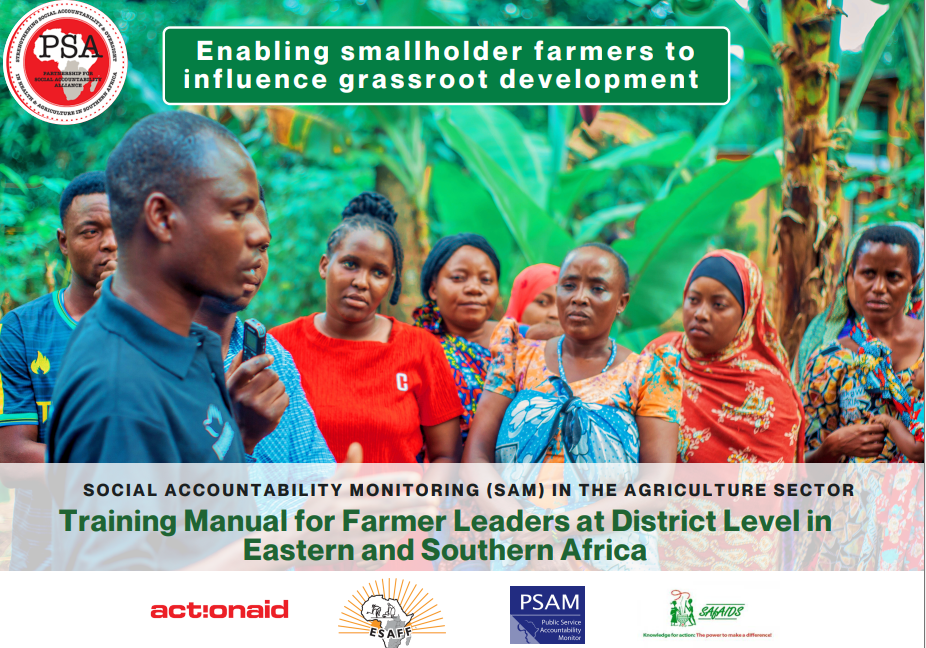STATEMENT BY CIVIL SOCIETY IN AFRICA: MODERNISING AFRICAN AGRICULTURE: WHO BENEFITS?
26/04/2013
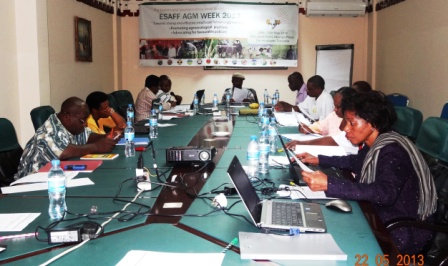
26th May 2013, Dar es salaam, Tanzania. On 26th May 2013, ESAFF farmer leaders in their AGM in Dar es salaam appended their signatures on the Civil Society organisations statement on various initiatives on agriculture in Africa. The statement is attached below; African agriculture is in need of support and investment. Many initiatives are flowing from the North, including the G8’s “New Alliance for Food Security and Nutrition in Africa” and the Alliance for a Green Revolution in Africa (AGRA). These initiatives are framed in terms of the African Union’s Comprehensive African Agricultural Development Programme (CAADP). This gives them a cover of legitimacy. But what is driving these investments, and who is set to benefit from them? The current wave of investment emerges on the back of the gathering global crisis with financial, economic, food, energy and ecological dimensions. Africa is seen as underperforming and in control of valuable resources that capital seeks for profitable purposes. The World Bank and others tell us Africa has an abundance of available fertile land, and that Africa’s production structure is inefficient, based as it is on many small farms producing mainly for themselves and their neighbourhoods . Africa is seen as a possible new frontier to make profits, with an eye on land, food and biofuels in particular. The recent investment wave must be understood in the context of consolidation of a global corporate food regime dominated by large corporations in input supply (seed and agrochemicals) especially, but also increasingly in processing, storage, trading and distribution. G8 and AGRA: a new wave of colonialism Opening markets and creating space for multinationals to secure profits lie at the heart of the G8 and AGRA interventions. Both initiatives are built on the basis of public-private partnerships (PPPs) with the large multinational seed, fertiliser and agrochemical companies setting the agenda, and states (like the G8, World Bank and others) and philanthropic institutions (like AGRA and others) establishing the institutional and infrastructural mechanisms to realise this agenda. Multinational corporations like Yara, Monsanto, Syngenta, Cargill and many others want secure markets for their products in Africa. In the first place, security means protection of their private ownership of knowledge in the form of intellectual property (IP) protection. Across Africa, so-called ‘harmonisation’ of laws and policies are underway to align African laws and systems with the interests of these multinationals. Harmonisation of trade laws means opening borders across the continent to free trade. But this is a skewed free trade, one that favours the ‘formal sector’ of goods and services that have gone through approval and registration processes. Farmers and other producers of goods and services who cannot afford to enter the official approval system are marginalised and trading of their products is rendered illegal. Private ownership of knowledge and material resources (for example, seed and genetic materials) means the flow of royalties out of Africa into the hands of multinational corporations. In some countries where laws protecting the interests of corporations are well established – for example in South Africa – multinationals have entirely occupied domestic seed and agrochemical sectors with profits flowing out of the country. The same is happening for agricultural services, trade, manufacturing and even selling of food. The private companies are not acting on their own. They are using investment-friendly government policies and plans to advance their agenda. CAADP and regional investment policies: facilitating ‘orderly’ processes of colonialism There are many well-meaning organisations and individuals who view CAADP as an African-based investment plan. But Africa is not isolated from the world. CAADP emerged at the height of neo-liberalism globally in the early 2000s. African governments were mired in the consequences of decades of structural adjustment that saw the net outflow of financial and other resources from Africa to the rest of the world. The New Economic Partnership for Africa’s Development (NEPAD) was an initiative by selected African governments to integrate Africa into global flows of capital. The expectation was that profit-generating investment, and creating the conditions for protection of this investment, was Africa’s chance to catch up with the rest. African governments, desperate for some financial relief, are willing to make whatever changes are necessary to bring capital into their countries. The multinationals are setting the terms: harmonisation, free trade and protection of private IP or no investment. It is therefore of little use calling for CAADP to be placed at the centre of investment plans. CAADP itself is a compromised instrument, calling for the very policies and programmes favoured by the multinationals. Food security and corporate-driven investment in Africa Harmonisation, free trade and the creation of institutions and infrastructure to facilitate multinational penetration into Africa are presented as the answer to food insecurity on the continent. Multinational corporations, African states, states outside Africa, philanthropic institutions, multilateral institutions such as the World Bank and even some non-government organisations are all part of this agenda. Surely so many organisations and people cannot be wrong? The logic is that of the Green Revolution: introduce yield- and sales-enhancing technologies and systems, provide credit for producers to access these technologies, and anticipate increasing returns from sales to cover the increasing cost of inputs. Expand access to markets globally and regionally to absorb increased production. This model can benefit some, as Green Revolutions in Asia and to a lesser extent in Latin America have shown. However, it also has negative social and ecological side effects. Green Revolution technologies benefit relatively few farmers, often at the expense of the majority. These technologies produce concentration of land ownership, increasing economies of scale (production has to be at a large scale to get into and stay in markets), and a declining number of food producing households in a context of limited other livelihood options. Ecological concerns about Green Revolution technologies are rising to the top of the global agenda, especially loss of biodiversity when commercial hybrids and GM seed dominate (especially maize as a staple crop in Africa, and the introduction of soya as the basis of biofuels and commercial intercropping approaches), soil degradation and water pollution caused by excessive use of manufactured chemicals in synthetic fertilisers, and water shortages caused by wasteful water use in irrigation. The Green Revolution produces uneven benefits, favouring farmers with financial resources of their own, with access to more land, and with some formal education. The majority of resource poor farmers are excluded from public support for agriculture, with infrastructure and institutional frameworks designed for the minority to benefit. Currently African food security rests fundamentally on small-scale and localised production. The majority of the African population continue to rely on agriculture as an important, if not the main, source of income and livelihoods. In most sub-Saharan African countries, agriculture is the primary economic activity for between 50% and 90% of the population . Even though there is growing urbanisation, the majority will continue to rely on agriculture for their livelihoods for decades to come. The rural population continues to grow in absolute terms even while the urban population grows as a proportion of the total population. We know that all of these people will not benefit from these new investments. Seen as more inefficient than those producers who are in a position to adopt the new technologies, many will be forced out of agriculture to become passive consumers. Instead of building the broad base of producers, G8 and AGRA investments, supported by African government policies and resources, will narrow the base of producers. The practical results of the recent surge in investment in African agriculture expose the rhetoric of African food security. Blatant land grabs are well known across the continent. Mega projects such as the ProSavanna project in northern Mozambique are displacing farmers from their lands and imposing large-scale production structures for export. Favourable investment terms (for example tax free zones and laws on repatriation of profits) undermine even the questionable benefits increased foreign exchange brings. Meanwhile actual farmers are separated from the land and the only realistic option for a livelihood. African governments and their investment ‘partners’ enable and implement these projects. Alternatives First and foremost, differentiated strategies are required, so that local and informal markets, proven low-input and ecologically sustainable agricultural techniques including intercropping, on-farm compost production, mixed farming systems (livestock, crops and trees), on-farm biofuel production and use, and intermediate processing and storage technologies are recognised and vigorously supported. The emphasis here is on individual and household food security first, with trade arising from surpluses beyond this. The International Assessment of Agricultural Knowledge, Science and Technology for Development (IAASTD) provides detailed and scientifically sound proposals in this regard. Open access technologies are an essential principle, especially seed, where all recent technological advances are based on 10,000 years of collective experimentation and sharing. No-one and no corporations should be allowed to privatise the results of ongoing research. Companies can sell their new varieties, but once sold, it re-enters the common pool that anyone should be able to use and improve on at will. Green Revolution technological development leads to an ever-increasing gap between conception and execution, that is between the knowledge that goes into producing a new seed variety and those who use the seed. An alternative, based on open source technologies, is a far closer working relationship between decentralised technicians and producers to define the research and development agenda (what traits are farmers looking for in specific locations, what crops are priorities for further development etc). Plant breeders are still able to make profits by selling new varieties to those who want to buy fresh seed, especially commercial farmers. But if farmers choose to reuse and adapt seed once they have bought it, that must be their right. We therefore call on the G8, AGRA, CAADP and other similar institutions to: • Acknowledge variation amongst farmers and commit to providing appropriate, dedicated support to all food producers rather than only a thin commercial layer; • Abandon efforts to assert private ownership of germplasm, agricultural techniques and knowledge and to accept that these all emerge from a common pool • Invest in and facilitate open source technological development together with farmers; • Invest in ecological agriculture following the IAASTD proposals; • Development finance to be based on grants and public programmes not for profit. • Ensure smallholder women and men farmers are at the centre of any strategy for increasing investment in this sector. There should be recognition of the on going broad consultation of the Committee on World Food Security (CFS) on Responsible Agricultural Investments (RAI). This process was the result of a decision of the CFS in 2011 following their rejection of the World Bank blueprint for Principles on Responsible Agricultural Investment in 2010. Signed by ESAFF Board members on 26th May 2013, Dar es salaam
















